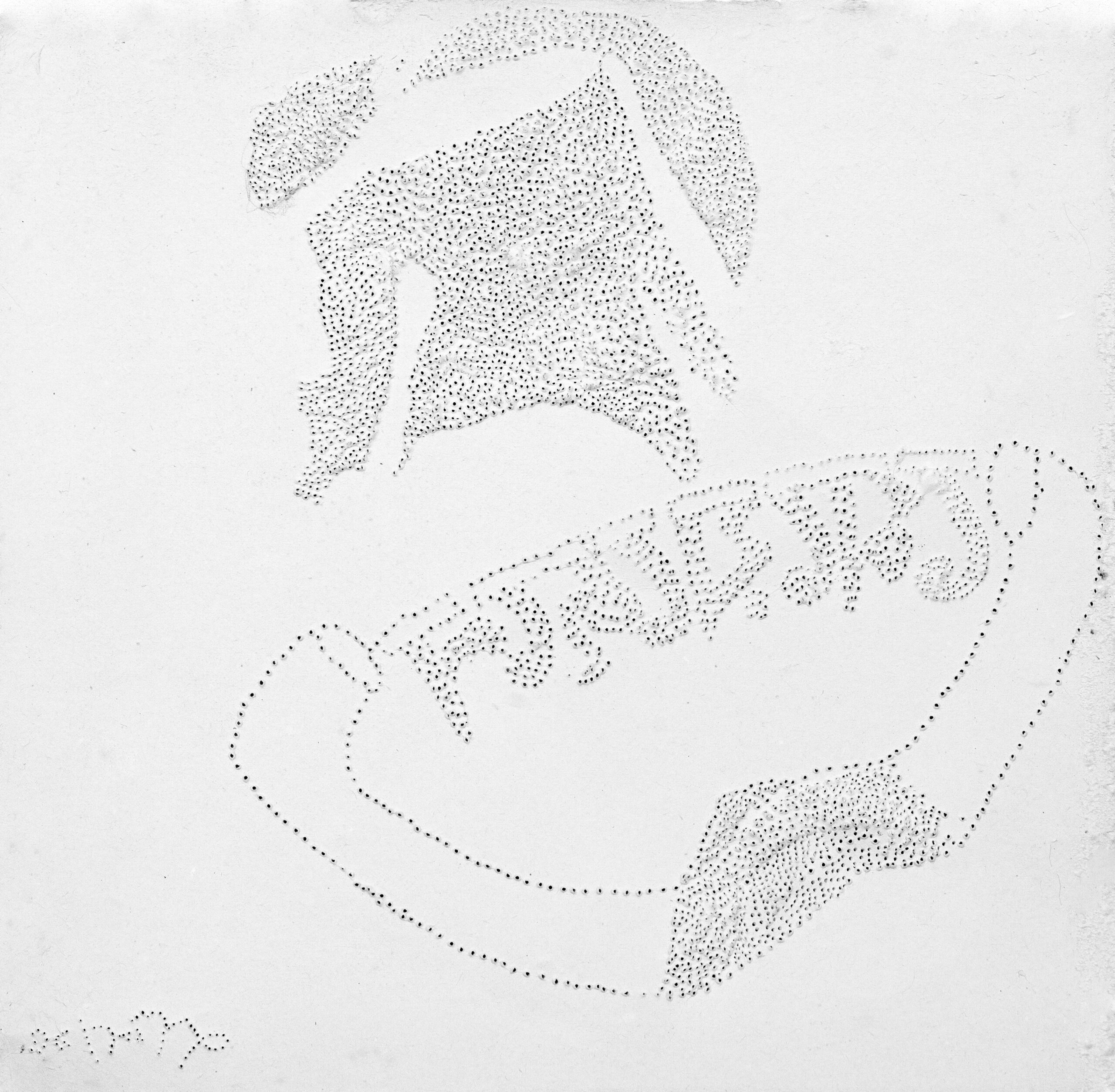Of Standing Open and Polysemy
The Works of Anandajit Ray
Dr. Aparna Roy Baliga
He unmasks, undoes the body as a mere accident, an accident that was construed easily and undone too. The trousers without the legs are perched on the railing, the wrist with watch bands and the bleeding socks through the absence of the whole embody a presence.
The conversation with Anandajit Ray about his works, the images in particular were like undoing the meaning. The images were like Sukumar Ray’s Ha Ja Ba Ra La, the disordered Bengali alphabets where the cognised words are jumbled up to let the viewers in the non- metric space of the paintings. He invents images as Lewis Caroll and Sukumar Ray might have been through the combined words like Portmanteau. Meaningless words combine with recognisable words to create a comprehensible poem. Ocular Detritus as he calls his recent body of works refers to the idea of dismantling of the linear vision. His images stand open and are multivalent, bringing to the fore the various issues of looking and reading.

The bird with the camera as an eye throws open this open position of the viewers as if the image is recording the perception of the viewer or is the artist making a pun of bird’s eye view or a teleological view which can be linked to the idea of the camera recording photographic images from everyday life that mutate into different forms. The photographic image transcends the reality of that specific image and becomes the irreal aesthetic object. Natural history images of bird heads excite the artist, he thinks about the rendering and not about any intended narration. It is not a mental image but a material analog on. The artist constructs the reality of the image through brush marks, layering of the canvas, its grains, the colours. He says the usage of a fine haired brush was important for him, a fine line or natural delineation come when one uses such a brush. What the artist is concerned about is, how an image is processed. Aesthetics can only be applied to the imaginary and that carries annihilation of the world in its essential structure. A super hero plunges, the surprise arrival of the super hero and the attached classical drapery bring forth the joy of painting the drapery of classical Greek sculptures, the flow of the drapery may have created these associations. If one looks at the structuring of the Hashiyas in Mughal miniatures they appear incongruent to the narrations within the painting.It is like bringing the Hashiyainside. The painter’s delight in looking at paintings by Mansur, the nuances of an animal life which could be seen in the Muraqqas painted by him also surfaces in Anandajit’s works. Permutation and combination shape, the bangs may be derived from the comic books, or may be the mannered use of a single tone was juggled with displacements. Through layering there is the camouflaging of the images, the moment when a narration begins, there are fragments spread all over from different worlds put together as assemblages, the gallery space with paintings enters within a painting itself again putting forth the idea of memory of an exhibition space within the pictorial frame. Fragmented bodies of human and animals appear and one attempts to read through these images, but the artist interrupts, it is part of his schema and correction, like while painting or drawing some portions are erased, the forms here are kept as it is to show the process of picture making. Thus the informed vision had been investigated, also as Bacon says-‘In painting, we always leave in too much that is habit, we never eliminate enough. His images thus get entrenched in this simple act of drawing and re-drawing. Chances or accidents turn the course of the work. Layering and chopping of images through collages and paper cuts fragment the images in part, the artist wants to block some portions, edit out and leave those forms to convey the unsaid.

